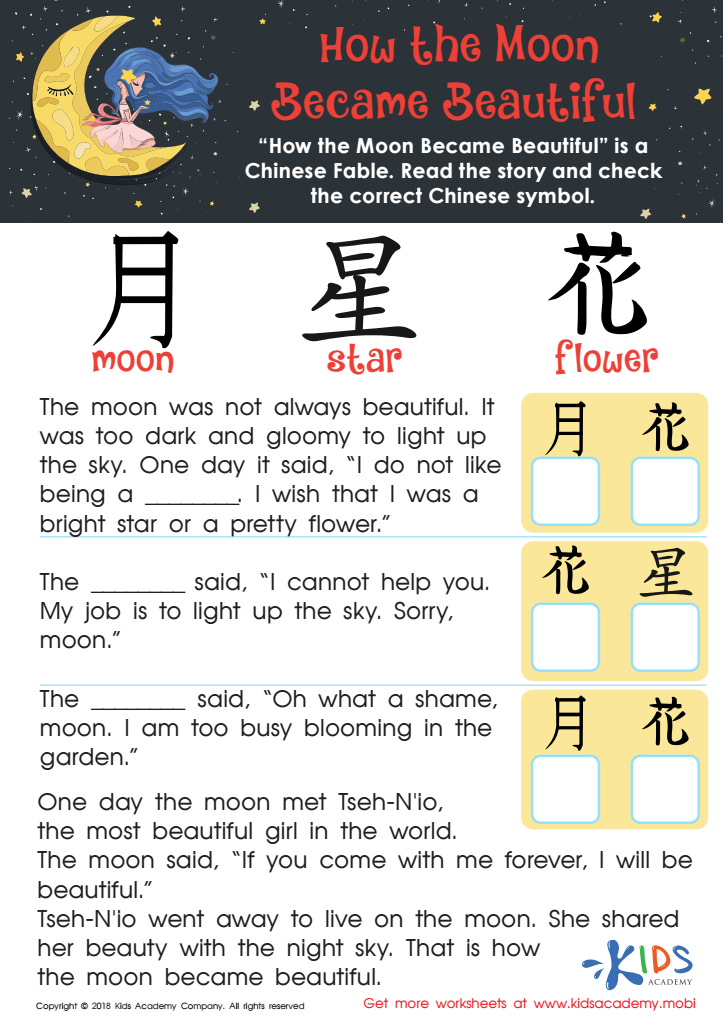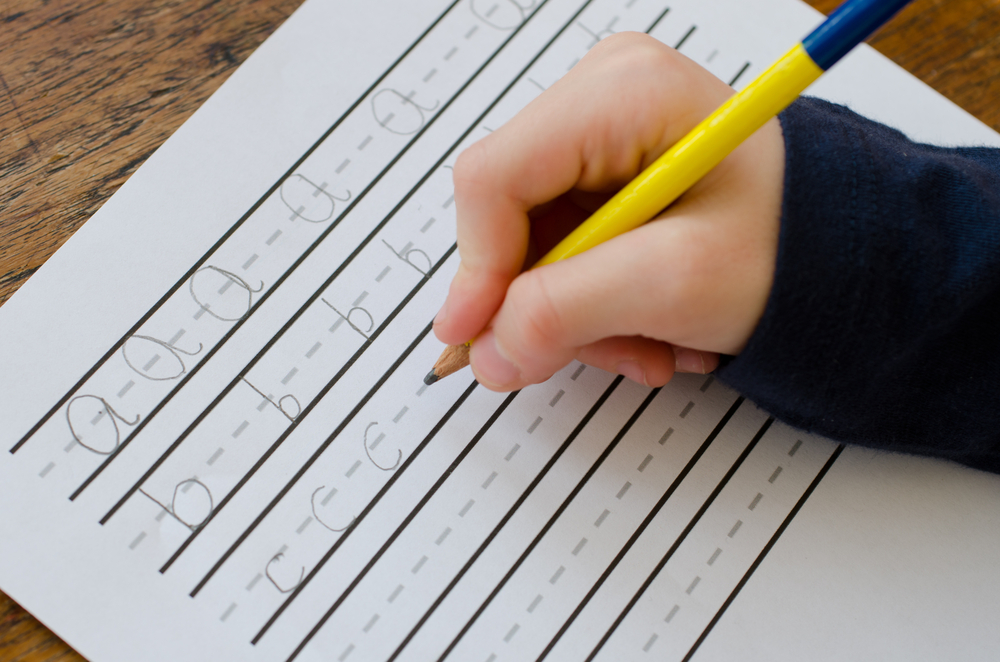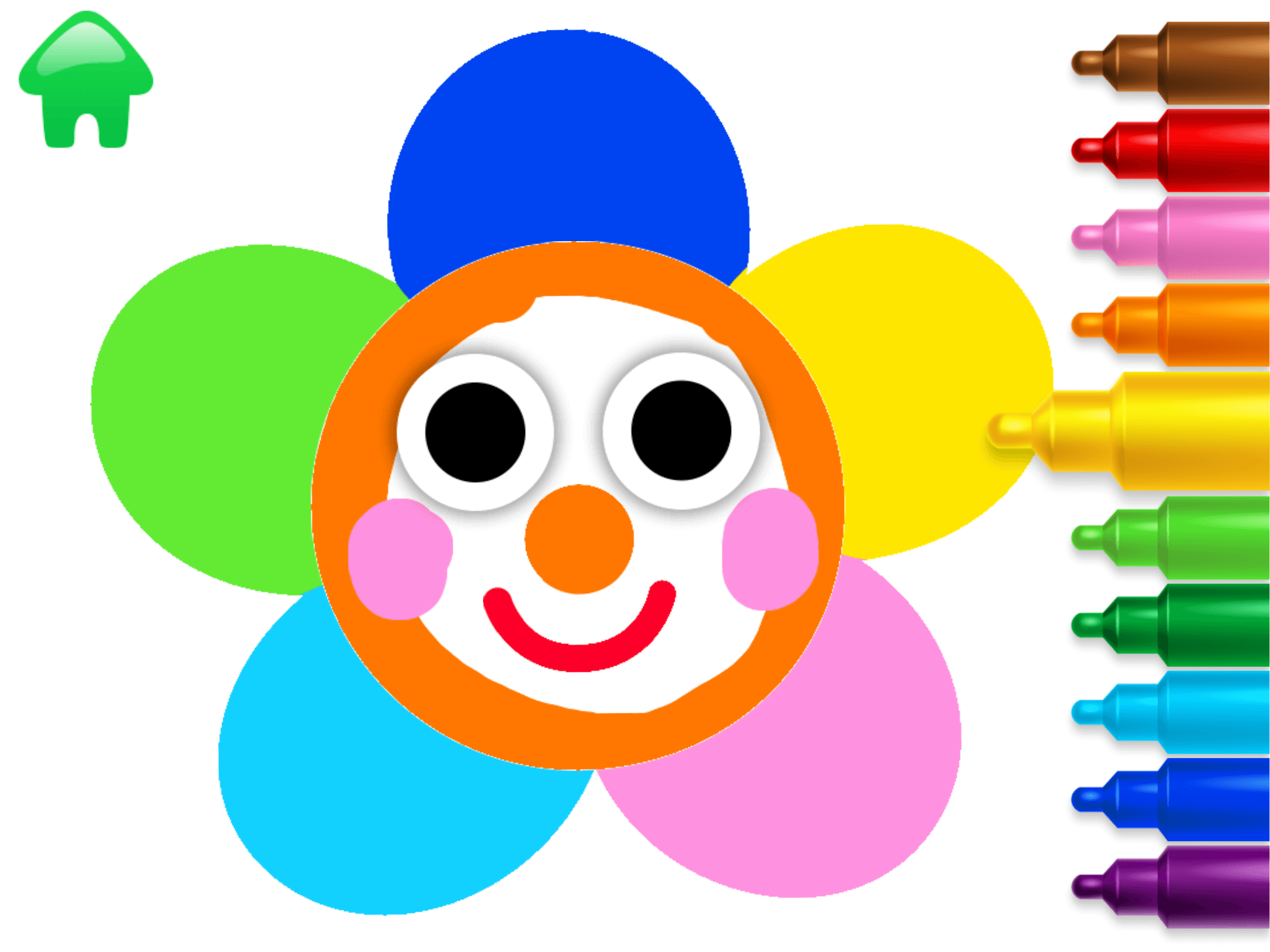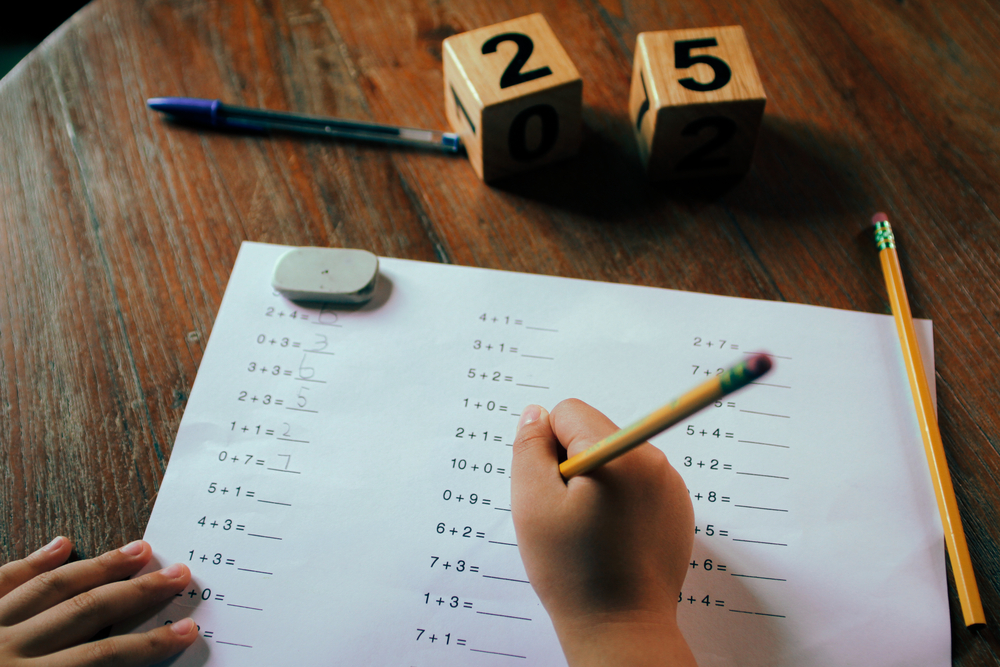Analyzing text Worksheets for Kids
1 filtered results
-
From - To


How the Moon Became Beautiful Worksheet
Question/Answer
How to train the Analyzing text skill in Grade 1 students learning about Reading Fiction?
To train Grade 1 students in analyzing text while reading fiction, introduce simple story elements such as characters, setting, and plot. Use picture books and engaging stories, asking questions about these elements and encouraging predictions. Incorporate activities like drawing scenes, acting out parts of the story, and retelling the story in their own words to deepen understanding and analysis skills.
How to test a Grade 1 student’s Analyzing text skills?
To test a Grade 1 student's analyzing text skills, use a simple, age-appropriate story or passage. Ask the student to identify the main characters, setting, and main events. Use questions that encourage the student to make predictions, infer feelings or motives, and connect events. For example, “Why do you think the character did that?
What are some effective activities to train students’ Analyzing text skill when teaching them about Reading Fiction?
Effective activities for training students in analyzing text when reading fiction include: guided group discussions, character analysis worksheets, identifying themes and motifs, creating plot diagrams, comparing and contrasting characters or events, text annotation exercises, journaling responses, and literary element scavenger hunts. These activities deepen comprehension and enhance critical thinking about the text's deeper meanings and structures.
 Assign to the classroom
Assign to the classroom












